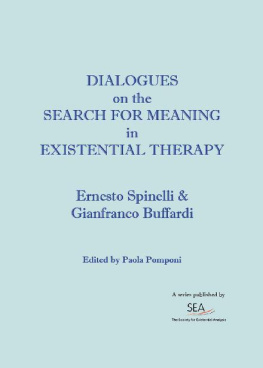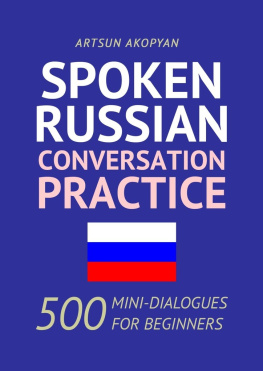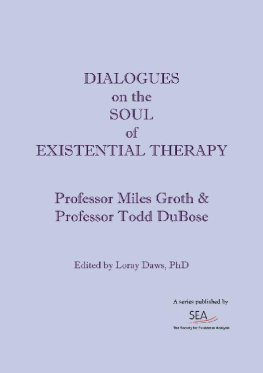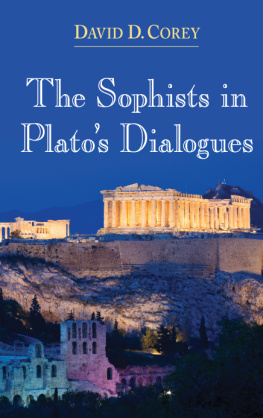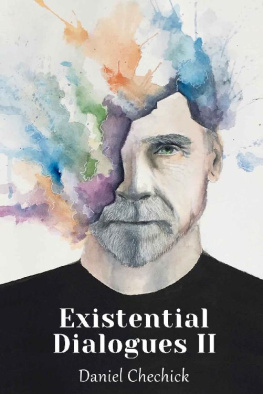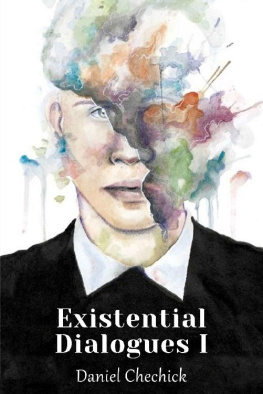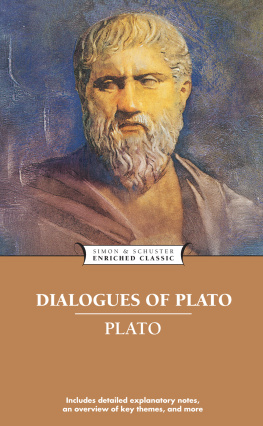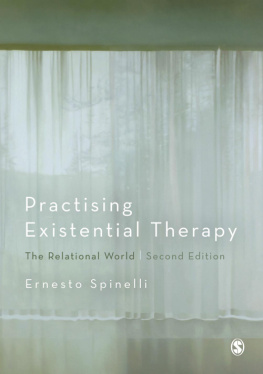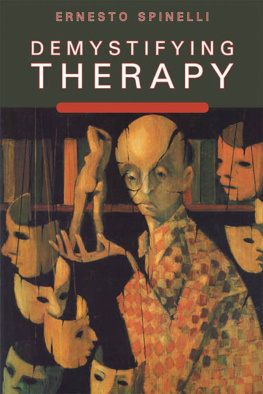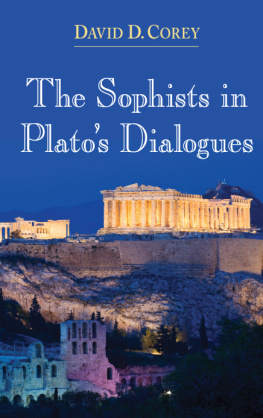
DIALOGUES ON THE SEARCH FOR MEANING IN EXISTENTIAL THERAPY
Ernesto Spinelli & Gianfranco Buffardi
Edited by Paola Pomponi
London
First published 2019 by The Society for Existential Analysis
Print edition typeset by Dean Andrews. Kindle edition by Adam Knowles.
All rights reserved. No part of this book may be reprinted or reproduced or utilised in any form or by any electronic, mechanical or other means, now known or hereaf-ter invented, including photocopying and recording, or in any information storage or retrieval system, without permission in writing from the publishers.
British Library Cataloguing in Publishing Data
A catalogue record for this book is available from the British Library ISBN 9781095671221
FOREWORD BY THE EDITOR
A few months ago my dear Italian friend Gianfranco Buffardi was in London with his wife on a short visit and we arranged to meet for dinner at my place, together with Ernesto Spinelli and his wife.
I was excited and concerned that the evening would work out, given some language difficulties because some had no English, some had no Italian, some were struggling with one or the other and only two people were truly bilingual.
In addition, my brother was visiting from Italy and joining us for dinner. He had been foretold that we had as distinguished guests a very important Italian Psychiatrist and an equally important English Iconoclast (his own definition), both also practicing as Existential Therapists, teachers and authors of several books.
I immersed myself in the preparation of food, knowing that a good meal gets very far in solving any communication problem, and while I was at it, I noticed my brother tiptoeing to my therapy room, probably looking for a quiet place where to indulge in an afternoon nap (a splendid Italian tradition). I saw him come back after a few seconds, puzzled:
There is no couch in your therapy room!
COUCH??!! I am an Existentialist!
Later on, sitting at the dinner table, after the main course and before dessert, my brother gathered all his courage and looking at both our very distinguished guests, the Psychiatrist and the Iconoclast, he asked:
Excuse me could you explain what Existential is..?
I think that in that very moment the seed of what was to become a dialogue between Gianfranco and Ernesto, was planted. It started as they both tried to answer my brothers question, one in Italian, the other in English. Thank God for the tiramis that had been served at that very moment, which provided the other guests with something else to focus on.
My brother later confessed that he had understood very little, but it was fine, there was no need for further explanation.
My two distinguished guests however, lingered on and this is what ensued.
Paola Pomponi
INTRODUCTION
This book is a collection of emails, a correspondence between Gianfranco and Ernesto, where each discusses and posits questions, doubts and comments on some of the basic themes of Existential Therapy and thought. They expand during ten chapters and touch on the most important and basic principles that make Existential Therapy stand out from all other forms of therapies in an intriguing and fascinating way.
The Dialogues are intended for a reader who is already familiar with the philosophical basis of Existential thought, but it can also be a starting point for those who are pondering about future training or studies in the psychotherapy field. Curiosity and questioning are the essential elements of learning and we hope that the following conversations will trigger further questioning and more dialogues in whatever fashion. Our wish is that they will offer stimulating reading and expand understanding, thus giving birth to a creative process in the readers mind.
At the end of the ten dialogues the editor attempts to reflect and describe how the conceptual principles of Existential Therapy are put into practice in the therapy room.
The title and subject of these writings addresses the fundamental principle that informs Existential Therapy: the search for meaning. In the exchange of questions, observations and ideas, Gianfranco and Ernesto describe their experience as Existential Therapists, in their own unique style.
Being-in-the-world and relatedness with others, create new, ever changing meaning. So, they ask, is there is just one meaning in life or different meanings that stem from different moments and experiences? Or is there another possibility, that there is no meaning at all? Keeping the balance between the meaning/meaningless polarity is a continuous struggle and this balance is very rarely, if at all, achieved.
As the conversation develops, we come across many important facets of the style that defines Existential Therapy. It is not so much the endeavour to search and find meaning but, rather, how that search is conducted.
The existential therapist stands beside the client, is an active part of the dialogue and the narrative, and in so doing is able to breathe the atmosphere of their encounter, to build on their relatedness and patiently follow the clients movement and development, or stillness and closeness as it may be.
It is such breathing the atmosphere that possibly defines E xistential Therapy as different from all other therapies.
Gianfranco is a Psychiatrist and coming from a scientific background he points out that we live in a world eager to further scientific research in the attempt to understand cause and effect and gain control of the quality of our lives. We all seem to need scientific models and their rigid logic. Scientific certainty seems to offer control and safety.
Ernesto comments that Existential Therapy, not a scientific endeavour, seems more a philosophical exercise than a therapy as such. In this landscape what resonates is the question What do I know and its answer, I dont know. The word therapia means standing beside the other. It is not cure, but care.
Existential Therapy is indeed different from all other therapies, and the difference lies in the fact that it is possibly more than just a therapeutic modality, it is a movement, a stance, a model, an attitude.
Important themes such as death, space and time and relatedness are discussed in the Dialogues in a deep and stimulating style.
My own sense of meaning, as I read and commented on the Dialogues, comes with the realization that Existential Therapy understands the etymological meaning of the term Therapy as care, in contrast with the other meaning usually attributed to it, that of cure. On the other hand to care-for is also a form of cure.
Existential Therapy differs from other types of therapy in that it is not supported by the medical model, because of its attempt to attend to the other, stand beside, be with, as the other is and not as the other should be. It is based on acceptance, willingness and stillness. It invests in the clients as they are, rather moving them on or suggesting better ways to be.
Observing the developments of these Dialogues in a sort of voyeuristic way, it transpires that both Ernesto and Gianfranco, and me as an observer, are all engaged in a search for meaning, for our professions and for our lives in general.
While Gianfranco has a scientific enquiring mind, Ernesto seems to reply from a I dont know perspective, although we all suspect that he knows quite a lot. His knowledge is the outcome of observation and analysis and ongoing questioning about the nature of being human in the world.
Next page
